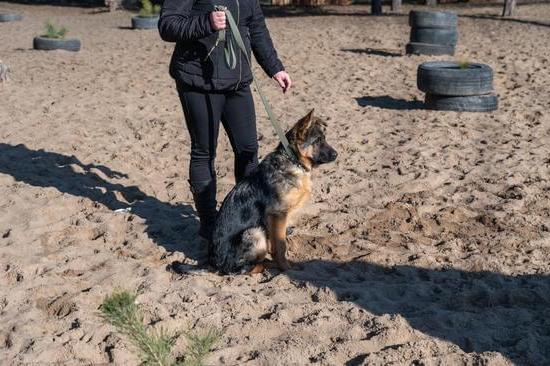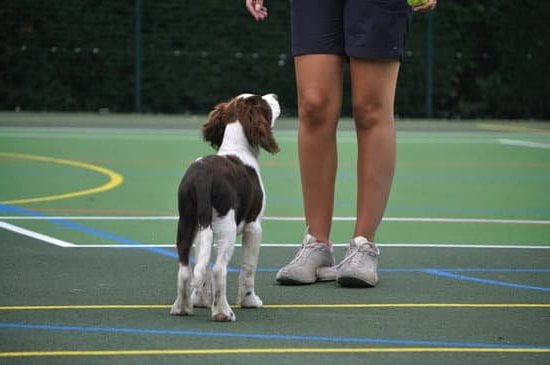What is the best length for a dog training lead? Choosing the right length for a dog training lead is crucial for effective and safe training. The length of the lead can significantly impact your ability to communicate with your dog, maintain control, and ensure their safety during walks or training sessions. In this article, we will explore the importance of using the right length dog training lead and provide key factors to consider when choosing one.
When it comes to training your dog, having the right tools is essential. One of the most important tools in your training arsenal is the dog training lead.
The length of the lead plays a critical role in how effectively you are able to guide and communicate with your dog. Factors such as the size and breed of your dog, as well as your specific training goals, should be taken into account when determining the best length for a dog training lead.
Understanding the different length options available for dog training leads is also important in making an informed decision. There are various lengths available, each with its own set of benefits and drawbacks. In the following sections, we will delve into the benefits and drawbacks of using both short and long dog training leads, as well as provide tips for choosing the best length based on your unique needs and circumstances.
Stay tuned to learn more about how to find the perfect length for your dog training lead, ensuring that you have a safe and effective tool for guiding and communicating with your furry companion during training sessions and everyday activities.
Key Factors to Consider When Choosing the Length of a Dog Training Lead
When it comes to choosing the right length for a dog training lead, there are several key factors that every pet owner should consider. The length of the lead can significantly impact the effectiveness of your training sessions, as well as the safety and comfort of both you and your dog.
One of the most important factors to consider is the size and breed of your dog. Larger breeds may require a longer lead to allow for more freedom of movement, while smaller breeds may do well with a shorter lead to maintain better control.
Another factor to consider is the specific type of training you will be doing with your dog. For obedience training and teaching basic commands, a shorter lead may be more appropriate as it allows for better control and communication. On the other hand, for activities like recall training or tracking, a longer lead may be necessary to give your dog more space to roam while still being under your supervision.
Additionally, you’ll want to consider your own comfort and handling ability when choosing a lead length. If you have limited mobility or strength, a longer lead may be difficult for you to manage. Conversely, a shorter lead may not give you enough room to comfortably work with your dog during training sessions. It’s important to find a balance that works for both you and your pet.
| Key Factors | Description |
|---|---|
| Size and Breed of Your Dog | Larger dogs may need longer leads for freedom of movement. |
| Type of Training | Shorter leads are better for obedience training, while longer leads are suitable for recall or tracking. |
| Your Comfort and Handling Ability | Choose a length that is comfortable for both you and your pet. |
Understanding the Different Length Options Available for Dog Training Leads
When it comes to choosing the right dog training lead, one of the most important factors to consider is the length of the lead. There are several different length options available for dog training leads, each with its own benefits and drawbacks. Understanding the different length options can help you make an informed decision about which lead is best suited for your dog and your specific training needs.
Short Dog Training Leads
Short dog training leads are typically around 4 to 6 feet in length. These shorter leads offer more control over your dog, making them ideal for obedience training, heel work, and practicing loose leash walking. The shorter length reduces the likelihood of tangling or tripping over excess lead, providing a safer and more manageable training experience. Additionally, short leads are great for teaching your dog to stay close and focused during training sessions.
Long Dog Training Leads
Long dog training leads can range anywhere from 15 to 50 feet in length. These longer leads are beneficial for practicing recall training, allowing your dog more freedom to explore while still under your control. They also provide a great way to introduce distance commands and work on off-leash behaviors in a controlled environment. However, it’s important to note that using a long lead requires extra vigilance to prevent tangling or dragging hazards.
By understanding the different length options available for dog training leads, you can better assess which option aligns with your specific training goals and your dog’s individual needs. Whether you opt for a short lead for precision obedience work or a long lead for extensive recall practice, choosing the right length will ultimately contribute to successful and effective training sessions with your furry companion.
The Benefits of Using a Short Dog Training Lead
When it comes to dog training, the length of the lead you use can have a significant impact on the effectiveness of your training sessions. Short dog training leads, typically around 4 to 6 feet in length, offer several benefits for both the trainer and the dog.
One of the main advantages of using a short lead is better control. With a shorter lead, you can easily guide and redirect your dog’s movements, making it easier to communicate your commands effectively.
Additionally, short leads are particularly useful for obedience training and teaching your dog to heel. The close proximity between you and your dog allows for clear communication and reinforcement of desired behaviors. Short leads also provide a sense of security for both the trainer and the dog, especially in crowded or high-traffic areas where safety is a concern.
Another benefit of using a short dog training lead is the ability to maintain focus. With a shorter lead, there is less opportunity for your dog to become distracted by their surroundings or other people and animals. This can be especially helpful during early stages of training when you are working on building attention and responsiveness in your dog. Ultimately, the best length for a dog training lead will depend on your specific training needs and goals.
The Benefits of Using a Long Dog Training Lead
When it comes to dog training, the length of the lead you use can have a significant impact on the effectiveness of your training sessions. A long dog training lead, typically between 20-30 feet in length, offers several benefits for both the trainer and the dog. One of the key advantages of using a long training lead is the increased freedom it provides for your dog to roam and explore during training sessions, while still maintaining control.
In addition to giving your dog more freedom to move around, a long training lead allows for more flexibility during obedience and recall training. With a longer lead, you can practice commands at greater distances, allowing your dog to gradually build up their responsiveness and reliability over time. This is particularly useful for outdoor training in open spaces or when working on recall in distracting environments.
Moreover, using a long training lead can also be beneficial for building confidence in shy or anxious dogs. The extra space provided by a long lead allows these dogs to explore their surroundings at their own pace while still staying connected to their owner, helping them gradually overcome their fears and insecurities in a controlled manner.
| Benefit of Using a Long Dog Training Lead | Details |
|---|---|
| Increased Freedom | Allows the dog to roam and explore during training sessions while maintaining control. |
| Flexibility in Training | Allows for practicing commands at greater distances and in distracting environments. |
| Building Confidence | Helps shy or anxious dogs gradually overcome their fears by exploring surroundings at their own pace. |
The Drawbacks of Using a Short Dog Training Lead
Using a short dog training lead can have its drawbacks, despite its potential benefits in certain situations. It’s important to consider these drawbacks when deciding on the best length for your dog training lead.
Limited Freedom of Movement
One of the main drawbacks of using a short dog training lead is that it limits your dog’s freedom of movement. With a shorter lead, your dog may feel restricted and unable to explore their surroundings properly. This can lead to frustration and potentially even behavioral issues if not addressed properly.
Less Room for Training Activities
Another downside of a short dog training lead is that it provides less room for training activities. If you are working on recall or teaching your dog new commands, having a longer lead can provide more space for them to practice and learn without feeling constrained.
Potential for Injury
A short lead can also increase the risk of injury, both for the handler and the dog. With less slack in the lead, sudden movements or pulls can cause strain or discomfort for both parties. Additionally, if the handler is not careful, they may accidentally trip over their dog due to the limited distance provided by a short lead.
Considering these drawbacks, it’s important to carefully assess your specific needs and your dog’s behavior when deciding on the best length for a dog training lead. While a shorter lead may be beneficial in some scenarios, it’s essential to weigh these potential drawbacks against its advantages before making a decision.
The Drawbacks of Using a Long Dog Training Lead
When it comes to using a long dog training lead, there are certainly some drawbacks to consider. While longer leads provide more freedom and space for your dog to explore, they also come with their own set of challenges.
One of the main drawbacks of using a long dog training lead is the potential for tangling. With a longer lead, there is a higher risk of the lead getting caught on obstacles or tangled around your dog’s legs, which can be frustrating for both you and your furry friend. This can also pose a safety hazard, as it may cause your dog to trip or become entangled in the lead.
Another drawback of using a long training lead is that it can be more difficult to maintain control over your dog, especially in distracting environments. With more length between you and your pup, it can be harder to quickly and effectively redirect their attention or prevent them from running off after something enticing.
In addition, using a long dog training lead may not be practical in certain situations, such as when walking in crowded areas or during obedience training where close control is necessary. The extra length may make it challenging to navigate through crowded spaces or maintain the level of control needed for focused training exercises. So while long leads offer freedom, they also come with their own set of limitations.
Tips for Choosing the Best Length for a Dog Training Lead
When it comes to choosing the best length for a dog training lead, there are a few key factors to consider that can help you make the right decision. The length of the lead can have a significant impact on your ability to control and train your dog effectively, so it’s important to choose the right one for your specific needs.
Here are some tips for choosing the best length for a dog training lead:
1. Consider Your Dog’s Size and Behavior: The size and behavior of your dog will play a significant role in determining the best lead length. Larger, more energetic dogs may benefit from a longer lead that gives them more freedom to move and explore, while smaller or more easily controlled dogs may be fine with a shorter lead.
2. Think About Training Goals: What are you trying to achieve with your dog’s training? If you’re working on obedience or recall training, a longer lead may be beneficial as it allows your dog more freedom to roam while still being under your control. For leash manners and walking training, a shorter lead may provide better control and communication.
3. Consider Your Own Comfort and Control: Ultimately, the best length for a dog training lead is one that provides you with comfort and control. If you feel more comfortable with a shorter lead because it gives you better control over your dog, then that may be the best option for you.
By taking these factors into consideration and thinking about what will work best for both you and your dog, you can choose the perfect length for your dog training lead. Remember to always prioritize safety and effectiveness when making this decision.
Conclusion
In conclusion, choosing the best length for a dog training lead depends on various factors such as the size and behavior of your dog, the type of training you are conducting, and your own comfort and handling style. It is essential to consider these key factors when selecting the appropriate length for your dog’s training lead in order to ensure a positive and effective training experience.
When it comes to understanding the different length options available for dog training leads, it is important to weigh the benefits and drawbacks of using both short and long leads. While a short lead provides better control and works well for obedience training, a long lead allows for more freedom and is ideal for recall training or allowing your dog to explore while still maintaining some level of control.
Ultimately, finding the perfect length for your dog’s training lead may require some trial and error. It is recommended to consider investing in leads of different lengths to determine which works best for you and your furry companion.
By keeping in mind the tips provided in this article and being mindful of your specific needs and training goals, you can confidently select the best length for a dog training lead that will enhance your bond with your pet while ensuring successful training outcomes.

Welcome to the blog! I am a professional dog trainer and have been working with dogs for many years. In this blog, I will be discussing various topics related to dog training, including tips, tricks, and advice. I hope you find this information helpful and informative. Thanks for reading!





